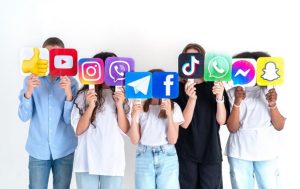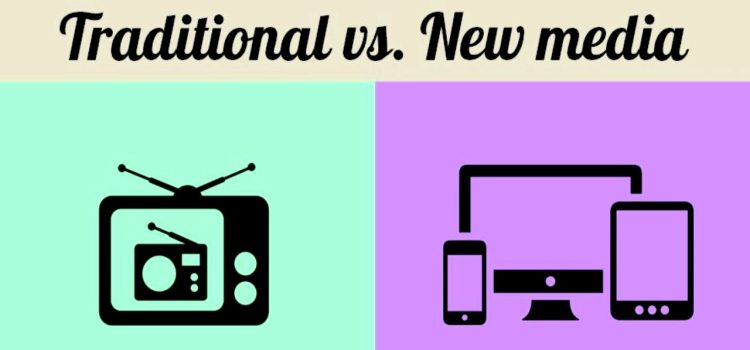
Introduction
In the digital age, new media has emerged as a formidable force, reshaping the landscape of traditional entertainment models. From streaming services to social media platforms, new media has revolutionized how content is created, distributed, and consumed. This article delves into the multifaceted impact of new media on traditional entertainment, exploring the transformations, challenges, and opportunities it presents.
The Rise of New Media

-
Definition and Scope
New media encompasses a broad range of digital platforms and technologies that facilitate interactive communication and content sharing. This includes social media, streaming services, podcasts, blogs, and more. Unlike traditional media, which is typically one-way, new media is characterized by its interactivity and user-generated content.
-
Historical Context
The advent of the internet in the late 20th century laid the groundwork for new media. Early forms of new media, such as email and forums, gradually evolved into more sophisticated platforms like YouTube, Netflix, and Instagram. These platforms have not only changed how we consume content but also how we engage with it.
Impact on Traditional Entertainment Models

-
Content Creation and Distribution
New media has democratized content creation, allowing independent filmmakers and creators to bypass traditional gatekeepers like studios and networks. Platforms such as YouTube and Vimeo enable creators to distribute their work directly to audiences, often at a fraction of the cost of traditional distribution methods.
-
Streaming Services
The rise of streaming services like Netflix, Hulu, and Amazon Prime has disrupted traditional television and film distribution models. These services offer on-demand content, allowing viewers to watch what they want, when they want. This shift has led to a decline in traditional TV viewership and a reevaluation of how content is monetized.
Impact on Traditional Studios

Traditional studios have had to adapt to the changing landscape by developing their own streaming platforms, such as Disney+ and HBO Max. These platforms not only provide a new revenue stream but also enable studios to retain control over their content.
Music Industry
-
Digital Distribution
New media has transformed the music industry through digital distribution channels like Spotify, Apple Music, and SoundCloud. These platforms allow artists to reach global audiences without the need for physical distribution, significantly reducing costs.
-
Social Media and Music Promotion
Social media platforms like Instagram, TikTok, and Twitter have become essential tools for music promotion. Artists can engage directly with fans, build their brand, and even go viral, all of which were challenging to achieve through traditional media.
-
Impact on Record Labels
Record labels have had to adapt by embracing digital distribution and leveraging social media for marketing. While the traditional model of album sales has declined, new revenue streams such as streaming royalties and digital downloads have emerged.
Publishing Industry
-
E-books and Audiobooks
The rise of e-books and audiobooks has transformed the publishing industry. Platforms like Amazon Kindle and Audible offer readers and listeners a convenient way to consume literature, leading to a decline in physical book sales.
-
Self-Publishing
New media has also democratized the publishing process through self-publishing platforms. Authors can now publish their work without the need for a traditional publisher, retaining more control and a larger share of the profits.
-
Impact on Traditional Publishers
Traditional publishers have had to adapt by embracing digital formats and exploring new revenue streams such as subscription services. While the industry faces challenges, it also presents opportunities for innovation.
Challenges and Opportunities

-
Challenges
-
Content Saturation
One of the significant challenges of new media is content saturation. With millions of videos, songs, and books available at the click of a button, standing out in the crowd has become increasingly difficult.
-
Monetization
Monetizing content in the age of new media presents its own set of challenges. While advertising and subscription models are prevalent, they may not always provide sustainable income for creators.
-
Intellectual Property
The digital nature of new media makes it easier for content to be copied and distributed without proper authorization, posing challenges for intellectual property protection.
-
Opportunities
-
Global Reach
New media platforms offer creators the opportunity to reach global audiences, breaking down geographical barriers that once limited traditional media.
-
Direct Engagement
New media allows for direct engagement between creators and audiences, fostering a sense of community and loyalty that is difficult to achieve through traditional media.
-
Innovation
The digital landscape is ripe for innovation, offering endless possibilities for new formats, interactive experiences, and personalized content.
Conclusion
The impact of new media on traditional entertainment models is profound and multifaceted. Streaming services, social media platforms, and digital distribution have revolutionized the way content is produced, distributed, and consumed. While these changes have opened up new opportunities for creators and audiences alike, they have also disrupted long-standing business models and created new challenges for traditional entertainment companies. As the industry continues to evolve, it will be crucial for established players to innovate and adapt to stay relevant in this rapidly changing landscape.









